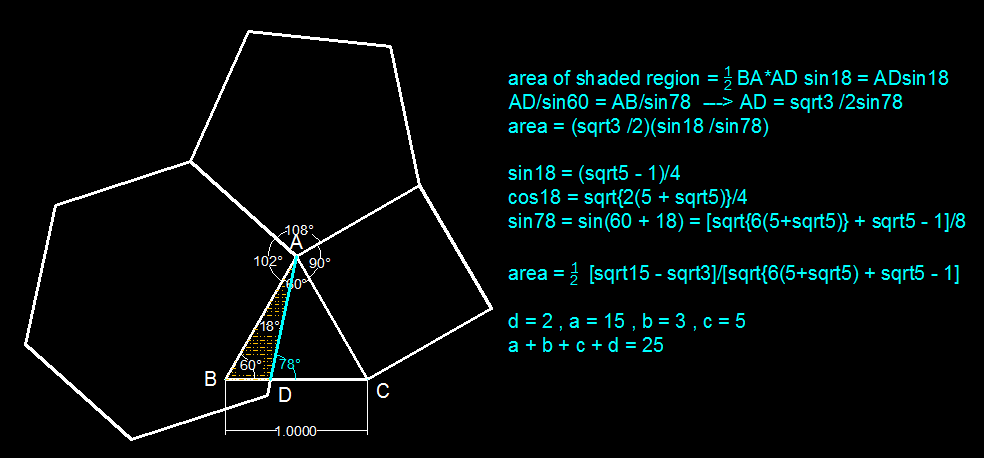A Polygon Flower
Regular Polygons are arranged around a unit equilateral triangle as shown in the figure above.
If the hatched area can be written as d 1 3 d ( c + c ) + c − 1 a − b for square-free integers a , b , c and d . Find a + b + c + d .
The answer is 25.
This section requires Javascript.
You are seeing this because something didn't load right. We suggest you, (a) try
refreshing the page, (b) enabling javascript if it is disabled on your browser and,
finally, (c)
loading the
non-javascript version of this page
. We're sorry about the hassle.
1 solution

@Digvijay Singh and @ahmad saad do you think this problem is over rated? If one knows the value of sin 1 8 then he/she can solve the question easily.
Log in to reply
Yes, It wasn't a hard nut to crack. Just simple trigonomerty and geometry.
It must've been rated Level 4.
Edit: It is rated Level 4 now.
Log in to reply
I had solved it differently so I didn't get it in that exact form you wanted, so I couldn't answer the question as an integer. Maybe allow the actual area (rounded to some decimals) as an answer to allow for different solutions.
I essentially treated AB as the x axis. line AD would be y=tan(18)x and BC is y=-tan(60)x +root3.
the height of the intersection of those 2 lines is the height of the triangle. from which I get area. maybe a bit primitive but it works.. i think.